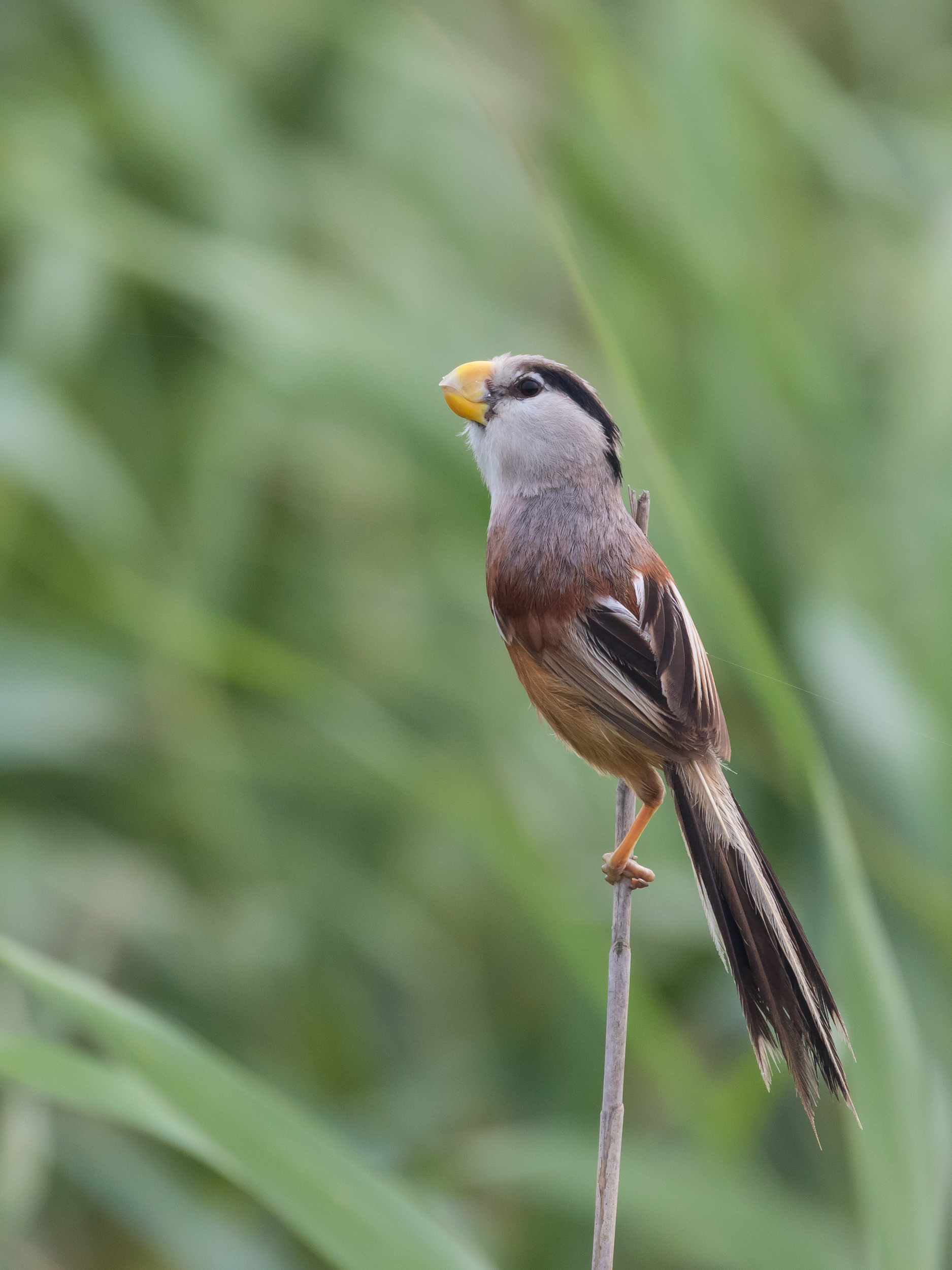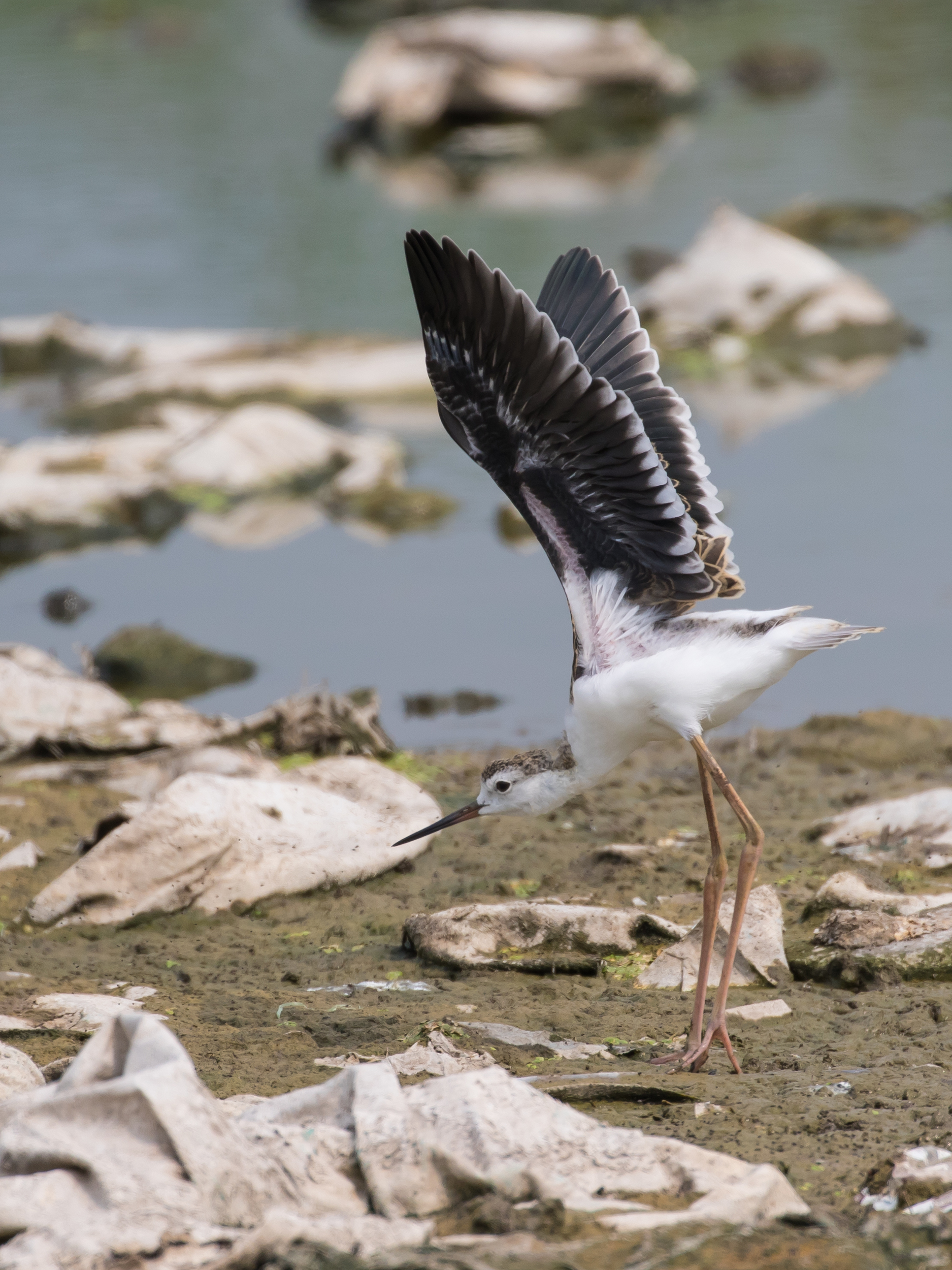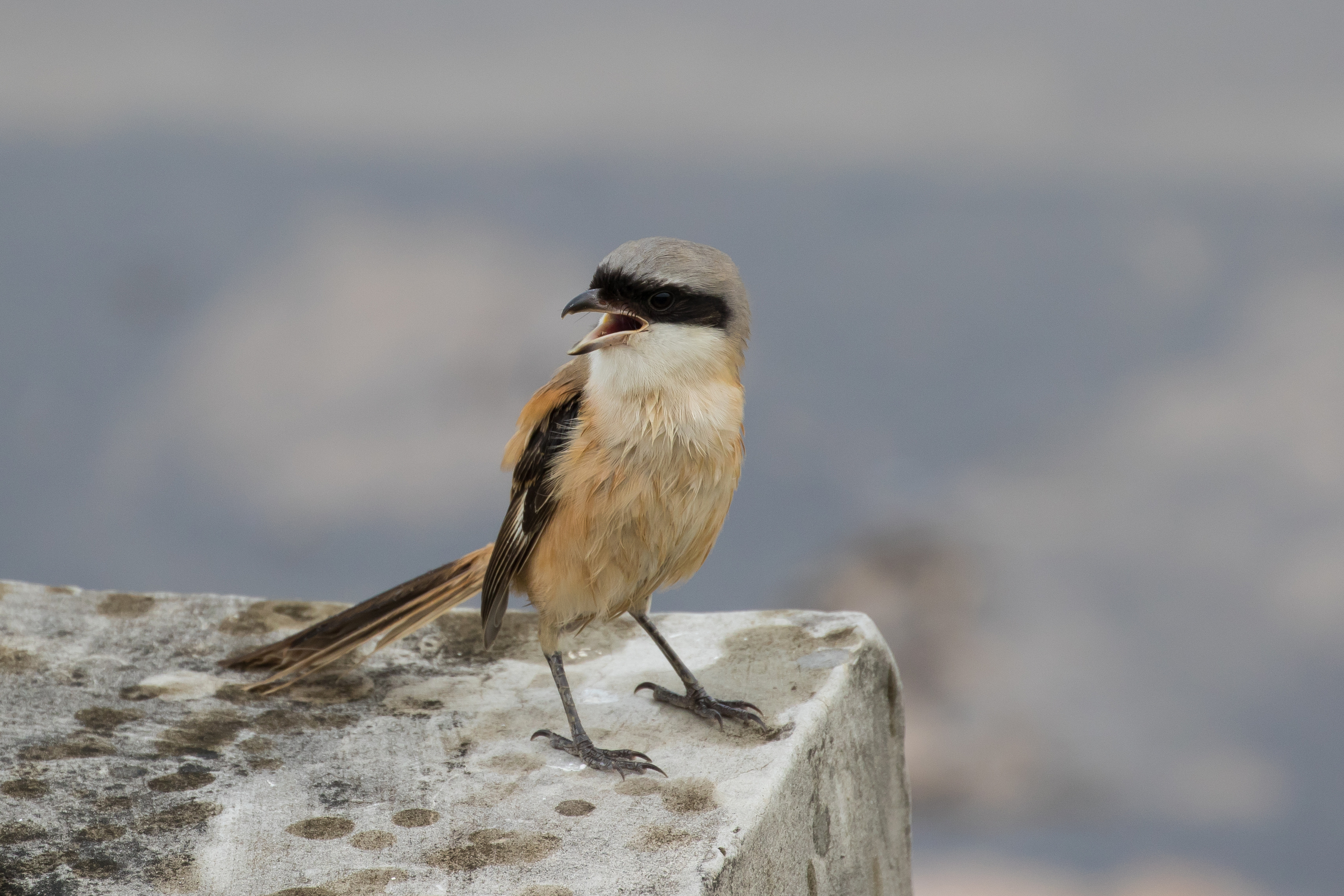In early August I was invited as a “Distinguished Lecturer” at Shanghai Jiao Tong University. This involved a 2 week stay, with lectures in both weeks, but a weekend in which I might be able to get out birding – if there was anywhere worth going in August in a city of 35M people. Remarkably, this trip would mean I had spent 3 of the 4 weeks in late July / early August in China.
Sadly, the SJTU campus, like much of Shanghai itself is almost devoid of biodiversity. I saw numerous Tree Sparrows and Light-vented Bulbuls, a few Chinese Blackbird, Night Heron and Chinese Pond Heron, some nice (but common) Long-tailed Shrike and basically nothing else.
It was clear from the outset that my options for getting lifers were pretty limited given the location and time of year. I decided to focus on Reed Parrotbill, a threatened member of the classic Sino-centric family, restricted to reedbeds on the coast around Shanghai. Despite lots of development, remarkably it clings on in good numbers even in apparently degraded reeds – if you know where to look.
It is not possible to hire a car in China without a Chinese licence, and any driver that I booked would almost certainly not know the sites or speak English, meaning I needed to find a local birder willing to help me get to an area where I might find Reed Parrotbill. Fortunately my pre-trip research led me to the excellent blog and site of Craig Brelsford, a American who has lived in Shanghai for 10 years and posts regular reports and ebird records from Shanghai and elsewhere in China. Craig was available (at a cost) to pick me up from SJTU early on Saturday, and spend the day at a key site outside Shanghai, Cape Nanhui.
In recent years, thanks to Craig and others, including his wife Elaine Du and friend Michael Grunwell, this site has received a lot more observer coverage, and consequently put it onto the map as a migration hotspot. While Beidaihe and Happy Island near Beijing have been well-known for many years as superb passerine “traps” during migration – the East Asian equivalent of Cape May, say – and Dongtai and Rudong north of Shanghai have recently become known as the world migration hotspot for Spoon-billed Sandpiper, Cape Nanhui a little further south has quietly accrued a staggering list that makes it ebird’s second richest site in all of China. Waders are drawn to mudflats, ponds and rice-paddies, while passerines take cover in the limited denser cover available; more specifically several “micro-forests” that attract robins and flycatchers and warblers all in need of cover and food.
We would be too early for any hopes of spectacular passerine migration, but 5th August might yield some interesting early waders, and the Reed Parrotbills are resident.
Fortunately it was a still day, but it was f*&!ing hot, around 36deg in the shade and 80% humidity, making for very uncomfortable conditions from around 9-10am until 2 when finally a rain shower brought relief.
Despite this we had a fantastic day, accruing an amazing 72 species, including some excellent waders and 2 lifers for me.
The day began early. The whole of China has only one timezone – Beijing time – which means that in Shanghai, a long way to the east, the sun comes up very early and sets relatively early for a city at this latitude at this time of year. Craig picked me up from SJTU at 5am and an hour’s drive through uninspiring urban sprawl and then degraded looking farmland and then a huge area of concrete rubble – known as “Ground Zero” to Craig and other local birders who say it has been that way “forever” – and finally at a site known as “Iron Track”. A few waders scuttled about on exposed mud here: Red-necked Stint, Wood Sandpiper and the ubiquitous Black-winged Stilt.
A few hundred metres on we stopped again. This was apparently a good site for Reed Parrotbill, and sure enough Craig heard one singing as soon as we got out of the car. A very short burst of playback later and a stunning adult Reed Parrotbill few towards us and perched on a swaying reed only a few metres away. Without further prompting we then had a family of around 6 birds including juveniles feeding and flying about in front of us for the next 15mins or so. We also observed an Oriental Reed Warbler which we scrutinized carefully – Craig noted that even though it is early in migration season, we should be prepared for anything.

On the Iron Track we also picked up both Yellow and Cinnamon Bittern, the first two of 4 different bittern species during the day. In fact we had a staggering 25 or more of the former and 4-5 of the latter during the day. Later in rice paddies we had Great Bittern fly over us twice (different birds), and late afternoon a Black Bittern – rare for the site – gave flight views.


While we waited to try and tempt what we thought was a Ruddy-breasted Crake into the open (Craig worked out only later that evening that we had in fact been hearing the very similar-sounding but much commoner White-breasted Waterhen) I spied a small flock of passerines which binocular views revealed to be Scaly-breasted Munia.
Beyond the Iron Track we reached the sea and drove the long sea wall that has been built to reclaim land and protect rice paddies from salt-water inundation. Along the sea-wall we had our first Lesser Coucal. Then Whiskered and White-winged Black Terns both put in appearances. The former were mostly still in winter plumage while the latter were moulting into summer plumage with white wings and blotchy black and white bodies. I also noted a pair of Pied Kingfisher and Craig commented were not common at this site.
By scanning ponds, rice-paddies and the mud-flats beyond the sea wall, we compiled an impressive list of waders. Star amongst these were three young Asian Dowitcher which I picked out from some Black-tailed Godwits as being somewhat different, and we confirmed the id with detailed reference to various field guides. Craig managed some phone-scoped video footage, but they were too distant for decent SLR photography. The pond with the dowitchers was particular fruitful and we visited it twice, once at noon, and then – after we were defeated by the heat and left it – later in the day when we wereretracing our path and the weather was mercifully cooler. It also held numerous Greenshank, 2 Spotted Redshank, a Dunlin, a few Broad-billed Sandpiper, a lone Ruff, several Marsh Sandpipers, lots of Long-toed Stint, a few Sharpies, and several Oriental Pratincole.
Elsewhere in rice-paddies and other exposed mud we had a single Red-necked Phalarope, a couple of Pacific Golden Plover, a few Little Ringed Plover, 20 or so Kentish Plovers, and a few Common Sand. The mudflats exposed by the tide were distant, but scanning with Craig’s scope we picked out Wimbrel, a dozen Lesser Sandplover (and some other birds for which we could not pin down Greater or Lesser), Grey-tailed Tattler, and Sanderling.
We managed 3 raptors for the day. The first was a distant but unmistakable fem or imm Eastern Marsh Harrier, quartering rice paddies. An immature Kestrel bombed over a bank very Peregrine-like, but was chased off by some Stilts. Late in the day I really did find a Peregrine resting on the deck.






Great final pic Ian! Impressive Bittern numbers too – glad you caught up with them after we drew a blank in Chengdu.